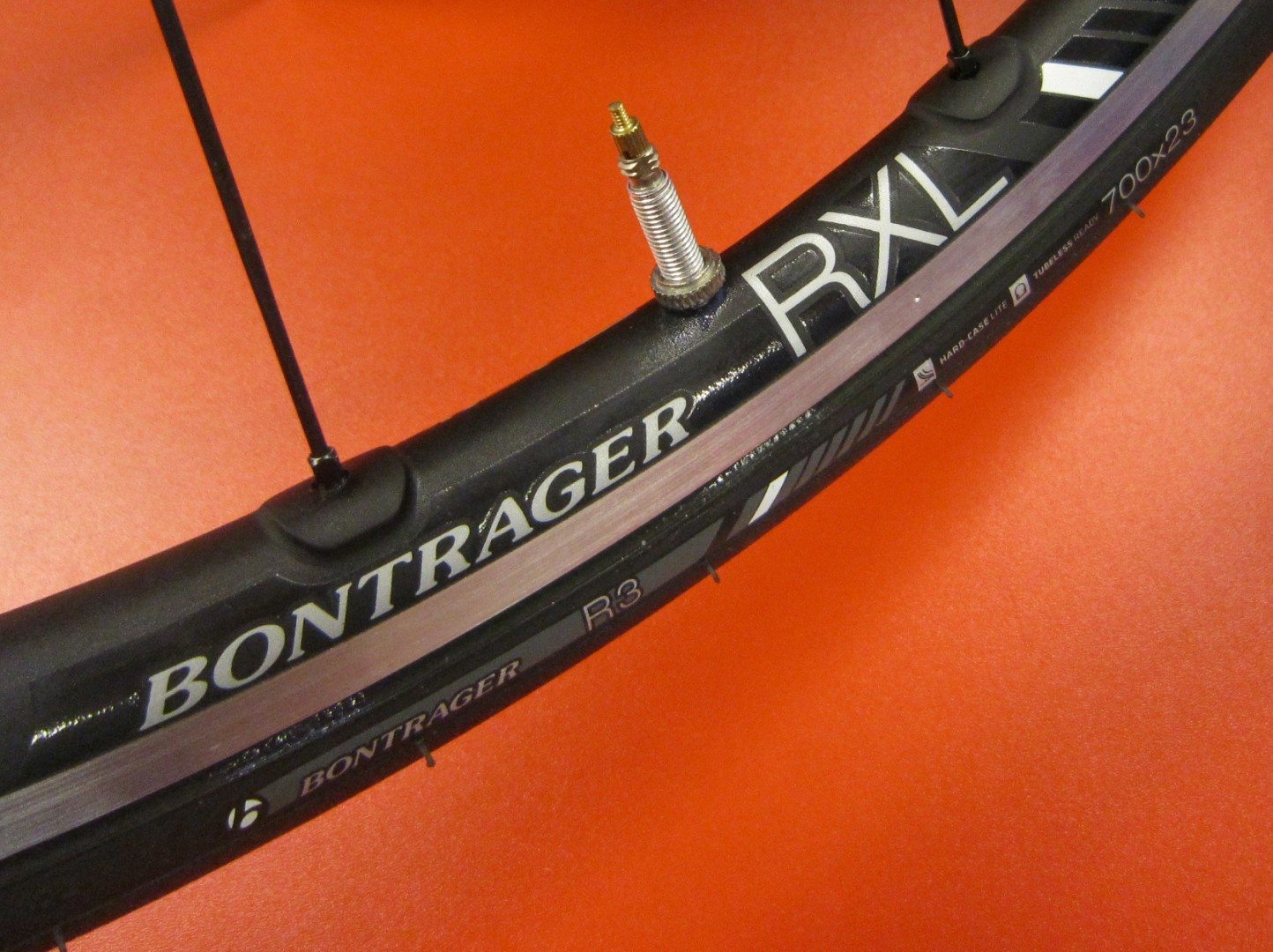Bontrager tubeless wheels
Bontrager tubeless wheels: reinvigorating the road tubeless sector
New “full-system” approach from US brand
Posted 9 July 2012
Words by Richard Hallett
Four years; that’s how long road tubeless tyres have been a serious proposition and one that I tried hard to like before giving up in the face of repeated disappointment… Sadly, not much happened after Philippe Gilbert rode tubeless to win 2008’s Het Volk (now Het Nieuwsblad) to improve on the performance of tyres that worked, but not quite well enough to justify the high expectations generated by that initial success. The Hutchinson Fusion tyres I tried proved cut-prone, hard to seat first time of fitting and surprisingly sluggish with a tube inside.
Of course, since the advantages expected of tubeless tyres are so enticing, there was always going to be a next generation and the new Bontrager tubeless wheels were unveiled alongside the “all-new” Trek Madone prior to the kick-off of the 2012 Tour de France.

RXL is one of two TLR wheelsets
The Bontrager tubeless system, obviously, shares with its predecessors the lack of an inner tube. Unlike most of them (those offered by major manufacturers), it doesn’t rely for air-tightness on a rim without holes for the spoke nipples but on a rim tape, in some sort of stiff plastic, that takes the place of the traditional rim tape and which has a cross-section that provides the air-tight seat for the tyre bead.
Systems broadly similar – using a profiled rim tape to provide a seal – but designed to convert conventional clincher rims to tubeless operation have been around for years but have tended to give the impression of being a bit home-brewed. Not so the new Bontrager TLR system, which is presented as a “full system” in which all the component parts are made by, and to the specifications of, the one manufacturer. As this gives Bontrager control over everything from initial design to manufacturing tolerances, it should guarantee that the various parts work well together.

1:rim; 2:strip and valve; 3: tyre; 4: sealant
The TLR rim, then, is not like other “tubeless” rims in that it has holes in the well for the nipples and relies on the carefully-profiled tape to provide the air tight seal with a tubeless tyre. Note a tubeless tyre; the wheels are compatible with existing road tubeless rubber from other manufacturers. The Bontrager tubeless tyre design employs the same shape cross-section around the bead to fit precisely into the alcove under the rim’s hook and thus provide the required seal.
The tyres do, however, have a Kevlar bead rather than the carbon-fibre used by road tubeless specialists Hutchinson. According to Bontrager, a carbon-fibre bead is tight for the first fitment but stretches as the tyre is fitted, making it less effective at retaining air on subsequent fittings. Kevlar, while stretchier on first usage, retains its properties over its lifetime, ensuring long-term consistency.

Perhaps the move to a rim tape to provide a good seal is the key; even hard plastic is deformable and it is easy to imagine that having a somewhat deformable – compressible even – layer between tyre and rim is more effective at providing an airtight seal than is expecting the rubber around the tyre bead to do the job unassisted, especially if the tape and rim are manufactured to the same initial design. Besides, the tape is vaguely slippery, which should help with seating the tyre.
We’ll see; the launch conditions offered only a brief opportunity to ride the TLR system, which worked a treat – no flats, great grip, fast rolling – during what little time we had. Spending some time with TLR in everyday riding conditions will give a better idea of how good it really is. Make no mistake, road tubeless that lives up to the promise of improved puncture resistance, lowered rolling resistance and greater grip but without any weight or ease-of-use penalty is on its way. This system promises to get closest yet; roll on the proper test.




